It’s hard to believe the pub date for Not Your China Doll is a little less than six months away. My publishing team and I have lots of fun stuff in store, including book giveaways, AMW-branded goodies, a sneak peak inside the book, and more—so the party’s just getting started!
Now, if you have enjoyed reading Half-Caste Woman and appreciate all the work that goes into writing the newsletter, the best way you can continue to support my work is by pre-ordering the book, which is available online nearly everywhere books are sold, even your local independent bookstore (check your favorite indie’s website or Bookshop.org). Thank you to everyone who has already pre-ordered their copy—your love and support means everything to me.
A question I often get asked by people interested in learning more about Anna May Wong is which of her films they should watch. This is a somewhat complicated question for me. My first impulse is to gush over all my favorites, most of which were produced in Europe. But knowing that many of AMW’s European films are hard to source, I usually simplify my answer and stick with Hollywood films like Shanghai Express. Don’t get me wrong, Shanghai Express is a fantastic film. I’ve watched it at least a half dozen times and I still laugh at all the jokes. However, the film’s major flaw is that there isn’t enough Anna May Wong in it.
Despite the outsized interest in AMW’s films, for a long time only a small number of diehard fans have been devoted enough to track down old prints of her films. That’s beginning to change thanks to archivists like Rebecca Lee who maintains The Gallery of Anna May Wong on YouTube, programming on Turner Classic Movies and Criterion Channel, and recent Blu-ray releases from Milestone Films and KL Studio Classics. One of my pipe dreams is that Not Your China Doll will help wedge that crack open a little further and get the ball rolling to remaster and digitize the films I consider her best.
So, with that in mind, I present to you my top 10 favorite Anna May Wong films, along with links to buy, stream, or bootleg them.
10. Java Head (1934)
Based on the novel of the same name, Java Head follows Gerrit Ammidon, a sea captain who returns to England from his travels abroad with a Chinese wife in tow. Taou Yuen, played by Anna May Wong, arrives in 1880s Bristol wearing the fanciful costumes of a Qing dynasty princess and promptly shocks her new husband’s entire village. It’s the Guess Who’s Coming to Dinner of the 1930s, and while the plot points are a bit hackneyed for this 21st century viewer with an all too predictable ending, the film shows AMW at her loveliest.
The film’s most notable feature, though, is that it was the first to show Anna May kissing her white co-star, John Loder, on-screen. That alone is reason enough to watch it. Meanwhile, the mere suggestion of on-screen “miscegenation” was still very much verboten in American cinema in 1934. Which is why Java Head was made in England by Basil Dean/Associate Talking Pictures, where there were no laws preventing interracial relationships. Yet even there, as I write in my book, an attempted kiss between AMW and her co-star in The Flame of Love (1930) was blocked by British censors four years earlier.
Java Head is available on Archive.org.
9. Chu Chin Chow (1934)
One could be forgiven for thinking Chu Chin Chow must have something to do with the Chinese, when, in fact, the only thing Chinese about it is Anna May Wong. The film was produced at Islington Studios in London and adapted from the popular 1916 stage musical of the same name, based on the Arabian Nights tale of Ali Baba and the 40 Thieves. Anna May plays Zahrat, a slave girl in the house of Kasim Baba who moonlights as a spy for her lover Abu Hasan, the thief with a hidden cave in the desert that opens to the magic words “open sesame.”
Although AMW was billed as the female lead, she deserves a bit more screen time in this ensemble cast. Still, her character plays a pivotal role in the plot and brings about Abu Hasan’s inevitable downfall after he double crosses her, in a show-stopping dance number you’ll want to play back several times. Anna May dons several striking looks, including a modest precursor of Princess Leia’s slave getup in The Return of the Jedi.
Chu Chin Chow is available on YouTube via The Gallery of Anna May Wong.
8. Tiger Bay (1934)
I knew I was going to like this film as soon as the opening credits rolled and I saw Anna May Wong’s hand appear to write her name in Chinese characters. Tiger Bay was made in the UK at an inflection point in Anna May’s career. After going through a rotten year of losing parts to white actresses done up in yellowface, she decided to wash her hands of Hollywood and sailed to England in 1933 where she launched her European cabaret tour.
“When I left Hollywood,” she told a reporter for Film Weekly, “I vowed that I would never act for the films again. You see, I was so tired of the parts I had to play. Why is it that the screen Chinese is nearly always the villain of the piece?” Then the script for Tiger Bay came along and she felt it was a good story with a good part. So, she happily broke her own vow.
In the film, AMW plays Liu Chang, the proprietress of a restaurant-saloon in a rough-and-tumble South American port town. Her backstory is a bit convoluted, but the gist of it is that Liu Chang is the guardian of a young English girl, Letty, who she wants to see married off to an upstanding Brit so that Letty will be whisked away to a better life (the kind of happy ending AMW was often denied). Add to that the fact that Liu Chang must singlehandedly fight off a brutish sailor, Olaf, and his gang, who try to extort a “protection” fee, and there’s plenty of action in this movie. Watching AMW get to be the heroine of the movie—with the screen time to match—is galvanzing, to say the least. She even had to learn to throw a knife for her final clash with the villain!
Tiger Bay is available on Goddess Anna May Wong’s Facebook page.
7. Daughter of Shanghai (1937)
If you’ve been reading Half-Caste Woman for a while now, this film likely needs no introduction. I’ve written at length about Daughter of Shanghai and how AMW and her childhood friend Philip Ahn became the first Asian American actors to portray a leading romantic couple in the sound era. (For more on Philip Ahn, check out my interview with his niece Christine Cuddy.)
Daughter of Shanghai is an important milestone in Anna May’s career for another reason too. In 1937, after returning from her one-year sojourn in China, she signed a new contract with Paramount and was determined to take on parts that showed the Chinese in a positive light. To this end, she persuaded Paramount to make several crime thrillers in the vein of the successful Charlie Chan series, in which she would play the crime-busting heroine. Daughter of Shanghai was the first of these films.
Based on a story ripped from the headlines, AMW’s character Lan Ying Lin and her father Quan Lin, played by Chingwah Lee, accidentally get mixed up with a human trafficking ring that has been smuggling undocumented immigrants into the country. When Lan Ying’s father attempts to report these criminals and is murdered as a result, she vows to avenge his death by exposing the international syndicate behind the operation. Working together, Philip Ahn and AMW’s characters ultimately crack the case and outwit the bad guys in a thrilling, sometimes humorous, final action sequence that goes above and beyond typical B-movie fare. Plus, our leading lady finally gets her happily ever after!
Daughter of Shanghai is available on Archive.org.
6. King of Chinatown (1939)
As the Second Sino-Japanese War raged on in Asia, Anna May became increasingly involved in efforts to raise money for China and shore up the country’s image in American media. King of Chinatown is perhaps the best of her films made at Paramount during this period, not only because it normalizes the everyday existence of Asian Americans in American life, but also because it is loosely based on a true story. Around this time, AMW became friends with Dr. Margaret Chung, the first Chinese American woman to become a doctor. Dr. Chung was a tireless fundraiser for United China Relief and recruited hundreds of American pilots to fly supplies across the Pacific, many of whom later joined the Flying Tigers. Her dream was to one day open a modern hospital in China.
To honor her selfless friend, AMW played a fictional version of Dr. Chung in King of Chinatown, a surgeon named Mary Ling. Akim Tamiroff assumed the role of local mobster Frank Baturin who ends up in the hospital with a bullet wound only Dr. Mary Ling can salvage. The patient, now a reformed gangster, falls in love with his doctor-savior and later bequeaths her the money she needs to send ambulances to China. Philip Ahn returns to play AMW’s love interest.
What makes this film especially enjoyable are the scenes that take place in Chinatown: a Chinese New Year dinner with friends, a boxing match featuring a spry Chinese American fighter, the loving banter between Mary Ling and her father in his herb shop. One imagines these were likely events culled from Anna May Wong’s personal experiences. They help enrich the film with a rare peek into Chinese American life.
King of Chinatown is available on YouTube via The Gallery of Anna May Wong.
5. Pavement Butterfly (1929)
Although Pavement Butterfly (sometimes called City Butterfly) doesn’t have the most original screenplay—it’s essentially a variation on the Madama Butterfly saga, just modernized and set in France instead of Japan—the expressionist imagery and Anna May’s silent era pathos set it apart. The film was AMW’s second effort with German director Richard Eichberg and shot on location in Paris and the French Riviera. She plays Mah, better known by her stage name Princess Butterfly, an exotic dancer down on her luck in an unjust world who is later spurned by her artist lover on account of a duplicitous man from her past.
In spite of all that melodrama, Pavement Butterfly is really quite a beautiful film with moments of levity and passion—and AMW dancing in the streets of Paris! The way she and her handsome co-star Fred Louis Lerch make eyes at each other in his bohemian artist loft, where she becomes his full-time muse, piques the imagination. You can’t help but wonder if they carried their characters’ mutual infatuation off-screen and into a few backstage dressing rooms. Or maybe that’s just what you call acting!
Pavement Butterfly is one of AMW’s rare European films that up until recently was only available in archives like the British Film Institute. The Deutsches Filminstitut & Filmmuseum, however, in Frankfurt, Germany, recently completed a full restoration and digitization of one of the original prints. I recently had the chance to watch the film in its full glory with live musical accompaniment at the San Francisco Silent Film Festival and at MoMA.
4. Shanghai Express (1932)
Shanghai Express is widely considered one of Anna May Wong’s best films (you’ll find a whole chapter dedicated to it in my book), yet it was conceived as a starring vehicle for Marlene Dietrich. Almost no one in America had heard of the German actress when she first rubbed shoulders with AMW at the Reimann Art School Ball in February 1930, but as a result of director Josef von Sternberg’s patronage, Marlene was transformed into an overnight sensation when she arrived in Hollywood later that year. By the time production began on Shanghai Express, Marlene had become one of the industry’s biggest stars.
In Shanghai Express we see a glimmer of what Anna May was truly capable of as an actress under von Sternberg’s demanding direction. According to one account, when Marlene invited a friend to watch an early cut of the film in a private screening room at Paramount, he made the mistake of remarking, “That Chinese girl is wonderful.” Silence filled the theater, as he recalled, and “the atmosphere grew distinctly chilly.”
He was right, though. Anna May Wong is wonderful in Shanghai Express and I can’t help but take some satisfaction in knowing that her talent made Marlene nervous! Reviewing the film for the Los Angeles Times, critic Edwin Schallert proclaimed, “That sliding gait of Miss Wong’s when she is on dire deeds bent is something never to be forgotten. . . . Strange and haunting power of personality does this oriental star always seem to possess.” Strange and haunting, indeed.
Shanghai Express is available on Archive.org.
3. The Toll of the Sea (1922)
As I’ve written previously, The Toll of the Sea was something of a fluke in AMW’s nascent career. Another Madama Butterfly-inspired story set in China and written by top screenwriter Frances Marion, it was the second film in cinema history to be made in Technicolor. The scientists behind it were more interested in showing off the capabilities of their new color technology than producing a box office hit, which opened the door for casting the relatively unknown, 17-year-old Anna May Wong in her first leading role (rather than casting white actors to play Chinese characters in yellowface).
AMW proved her chops and then some with her beautifully moving performance as Lotus Blossom, and despite the film’s predictable storyline, critics raved about her on-screen presence. The reviewer for the New York Times noted pointedly, “She has a difficult role, a role that is botched nine times out of ten, but hers is the tenth performance . . . She should be seen again and often on the screen.”
100 years later, The Toll of the Sea still holds up as a masterpiece of the silent era. AMW herself considered it one of her best roles. When Douglas Fairbanks attended the film’s premiere, he immediately recognized AMW’s talent and cast her in his 1924 blockbuster The Thief of Bagdad, which ultimately catapulted the young actress to international stardom.
The Toll of the Sea is available online at the National Film Preservation Foundation.
2. Piccadilly (1929)
There’s a reason I devote an entire chapter in my book, titled “The Girl Who Can’t Help Being Chinese,” to the making of this film. Piccadilly was hailed as a triumph of British cinema when it was released in 1929 and sparked a craze for all things Anna May Wong in London’s fashionable quarters. The film begins with successful nightclub owner, Valentine Wilmot, played by Jameson Thomas. The bulk of the action takes place at his Piccadilly establishment where Mabel Greenfield headlines the main act and also moonlights as Valentine’s lover.
Piccadilly was envisioned as a blockbuster from the very start. British International Pictures brought over Gilda Gray, inventor of the shimmy and one of highest paid Hollywood actresses at the time, to star as Mabel, hired well-known novelist Arnold Bennett to pen the screenplay, recruited German director E. A. Dupont, and allocated a massive budget to constructing the elaborate Piccadilly nightclub set at their studios in Elstree. Though Gilda had top billing, Anna May—cast as Shosho, the Chinese upstart who moves from the scullery to the dance floor—completely stole the show in both the fictional setting of the film and in real life.
What struck me the first time I watched Piccadilly was how neatly it resembles AMW’s trajectory as an actress. Art imitates life, as the saying goes. Taking on this part was, in a way, a chance for Anna May to tell her own story—to remind people of her humble beginnings and show how even a lowly scullery maid (or a laundryman’s daughter) has the agency to change her destiny. Of course, who could forget AMW’s strange, mesmerizing performance as “Shosho, the Chinese Dancing Wonder!”
My favorite scene, however, and the film’s most powerful, is the one in which Shosho and Valentine canoodle in a Limehouse saloon—that is, until they watch another interracial couple get thrown out for crossing the color line. Racy stuff for 1929! And one of AMW’s finest moments from the silent era.
Piccadilly is available on YouTube and Blu-ray.
1. Song (1928)
When Anna May Wong left Hollywood in the spring of 1928 and sailed to Germany, Song (also known as Dirty Money in Germany and Show Life in England) was the first film she made in Europe at UFA’s Neubabelsberg studios. According to Walter Benjamin, who became an acquaintance while she was in Berlin, fans traveled the one hour out of the city to the UFA studios just to watch AMW cry her movie star tears. Written by Karl Vollmöller specifically for AMW, it was retitled from its original name Dirty Money to Song, in a nod to her Chinese name Wong Liu Tsong.
The film tells the story of star-crossed lovers: Song, a Malaysian street urchin (but dressed like a hula girl) stranded in a Middle Eastern port town, falls in love with Jack, played by Heinrich George, a knife-thrower with a sordid past who is stuck on his former lover, a famous ballet dancer. Song becomes Jack’s assistant in his knife-throwing act but Jack is blind (both figuratively and later literally) to her growing attachment. By the time he finally swears off his ex and realizes the woman he loves has been Song all along, it’s too late.
In spite of its relatively cliched plot, the film is visually stunning and Anna May’s powers as a silent era actress are fully explored. Director Richard Eichberg’s evocative rendering of the melodramatic storyline coupled with Anna May’s luminous performances throughout, by turns heart-wrenching, suspenseful, and comedic, make Song an unlikely triumph.
Though the film was made during the waning days of German Expressionism, its visual style and camera techniques were clearly influenced by the prevailing aesthetics of the era. When it rains, it pours—the sky floods the streets, drenching the miserable-looking Song as she seeks refuge in Jack’s shack. The world inside the frame goes completely topsy-turvy when Jack, in a deranged fury, throws his knives recklessly across the room at Song while she scrambles out of his line of fire. And for one brief moment before her life expires, Song looks up at Jack, her one true love, glowing like an angel with a halo of light encircling her head.
The real tragedy of this movie, Anna May Wong’s absolute best IMHO, is that very few people have ever seen it. Song has not been remastered or digitized. The copy I watched on 35 mm is part of the archives at the British Film Institute (you can watch a few of my favorite scenes in this newsletter). There is, however, an abridged U.S. cut of the film on YouTube. For now, this is the closest you can get to watching the original without making a trip to BFI.
And there you have it, my top 10 Anna May Wong films. Which ones are your favorites? If you’ve watched any of these films, I’d love to hear what you think of them. Drop me a line in the comments.
Charlie Chan’s Final Mystery
One of the great joys of writing a book about Anna May Wong has been learning about her contemporaries—the other Asian actors, cameramen, consultants, and screenwriters—who were working in Hollywood in the 1920 and 30s. I was fascinated by their individual stories and awed by their presence in a time and industry I assumed counted few, if any, Asians among its ranks. I thought maybe I could write a whole series of profiles on them and pitched the idea to the website of a well-known literary publication. Unfortunately, they passed on it and the idea sat fallow for a year or two.
Then one day last fall I got an email from Ed Park asking if I’d ever come across a guy named . . . Ed Park (!) along with a photo of the man in question, who had supposedly played Charlie Chan in a movie once. I told the former Ed how I’d wanted to write about Kamiyama Sojin, a Japanese actor who was the first to play Charlie Chan on-screen. “Want to write about it for The Believer?” he asked. Did I ever! And so began the journey of recovering the stories behind the Asian actors (not one, but three!) who first portrayed the famous Chinese detective, which I detail in “The Man Without a Face” for The Believer Issue 143. I hope you will give it a read.
My thanks to Ed for giving me the chance to tell this story and solve the mystery of the other Ed Park, Daniel Gumbiner for helping bring it to fruition, Kristian Hammerstad for their awesome illustrations, and the rest of the team at The Believer. And a special thank you to Bo-Gay Tong Salvador, the granddaughter of Edward L. Park, who shared so many incredible stories about her family’s foray into Hollywood. Seeing this article come to life has been a dream!




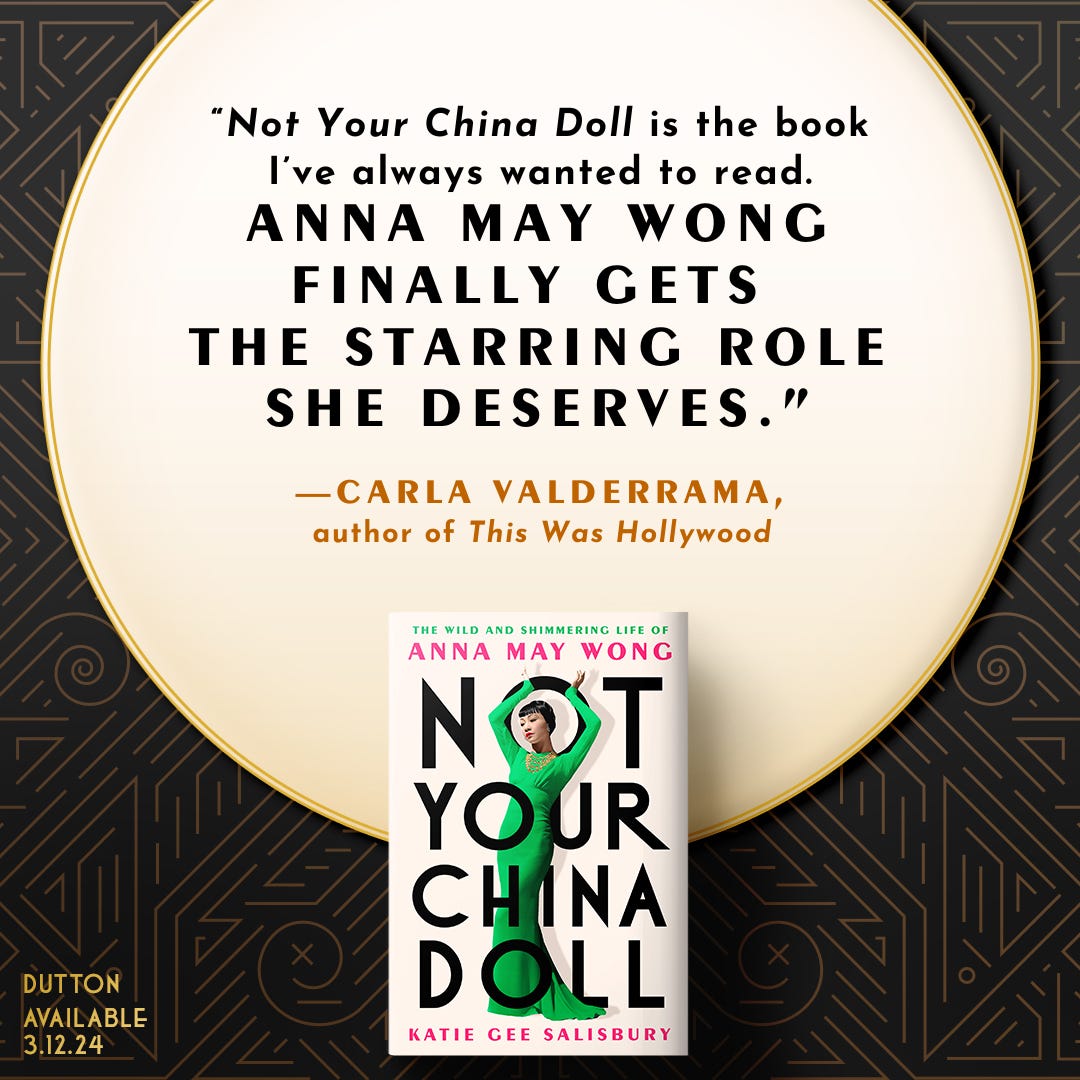
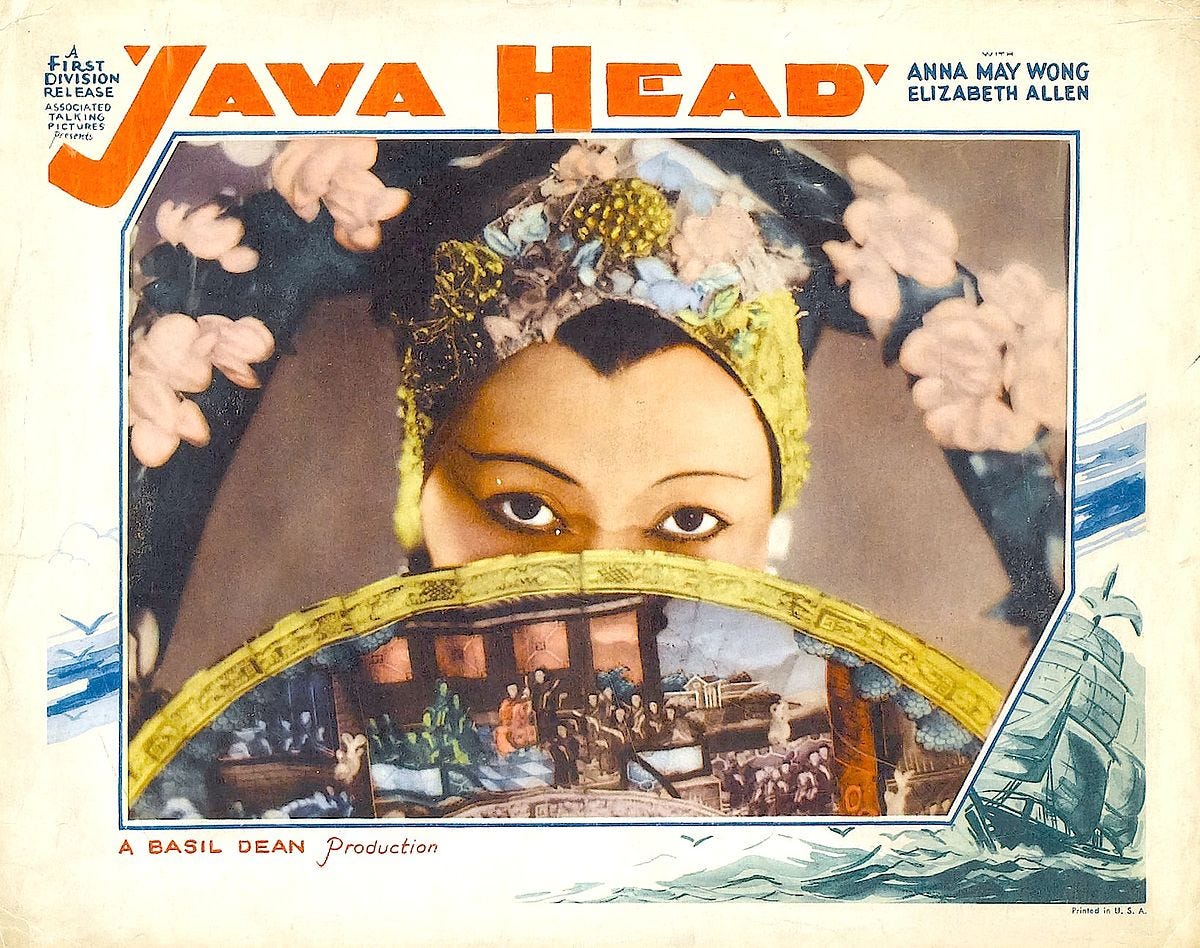
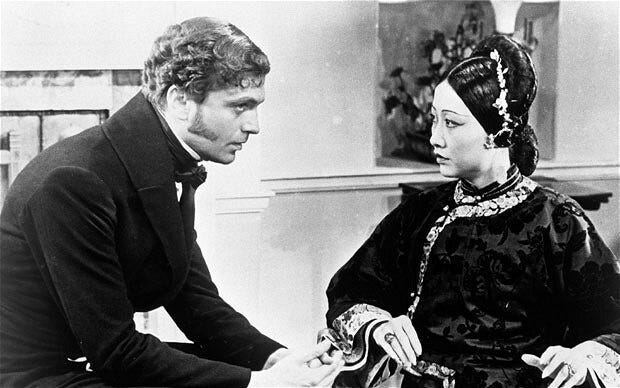
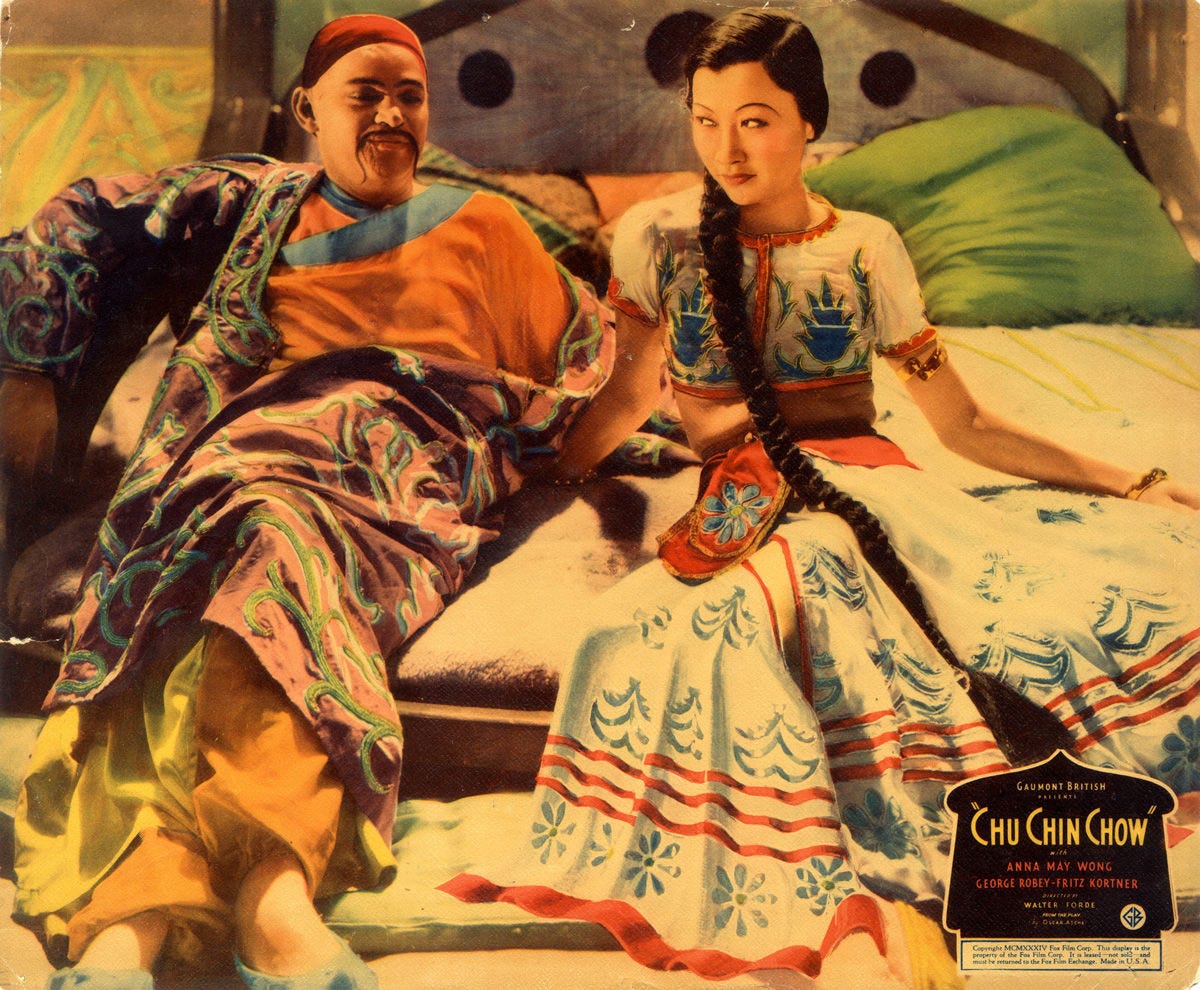
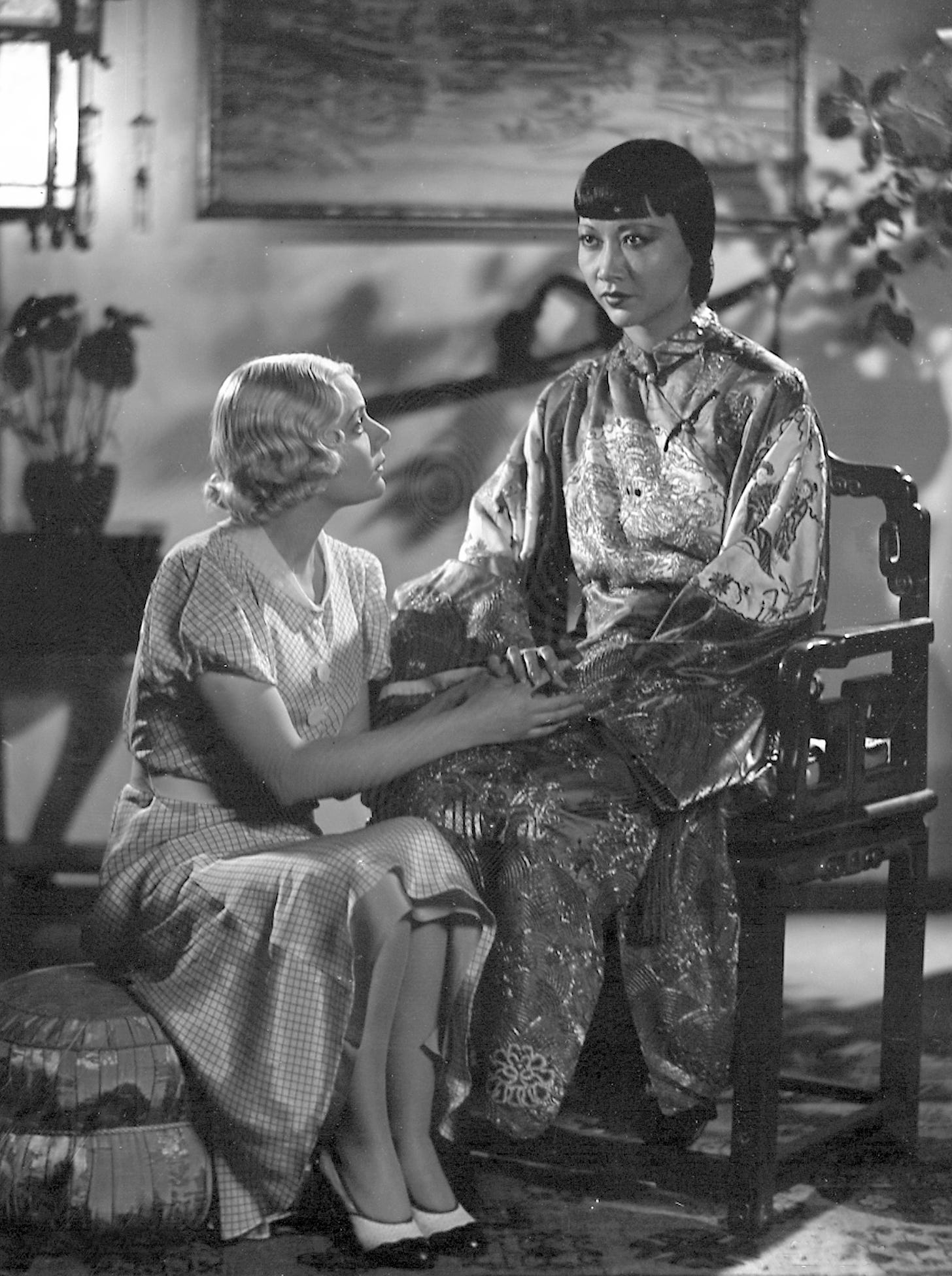
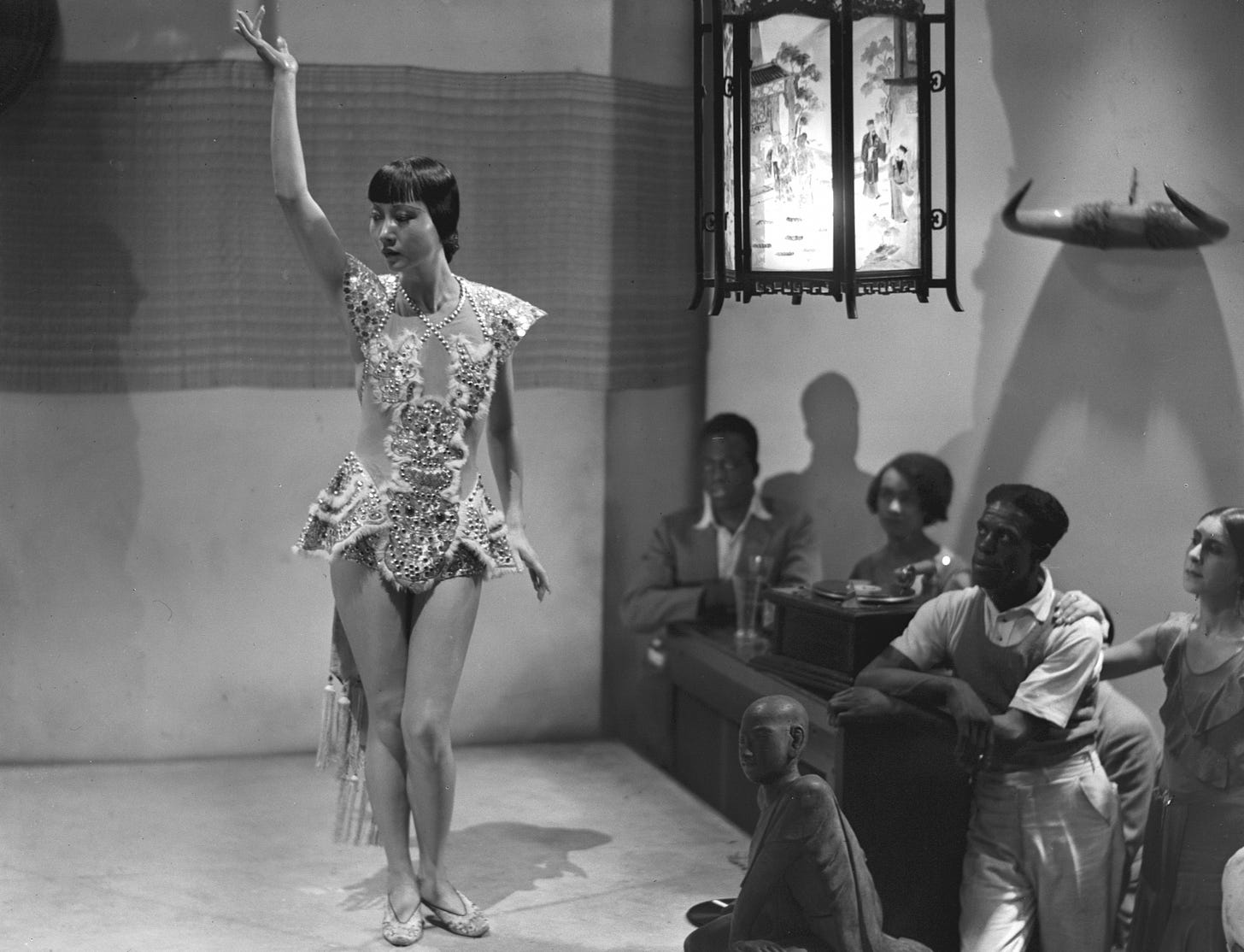
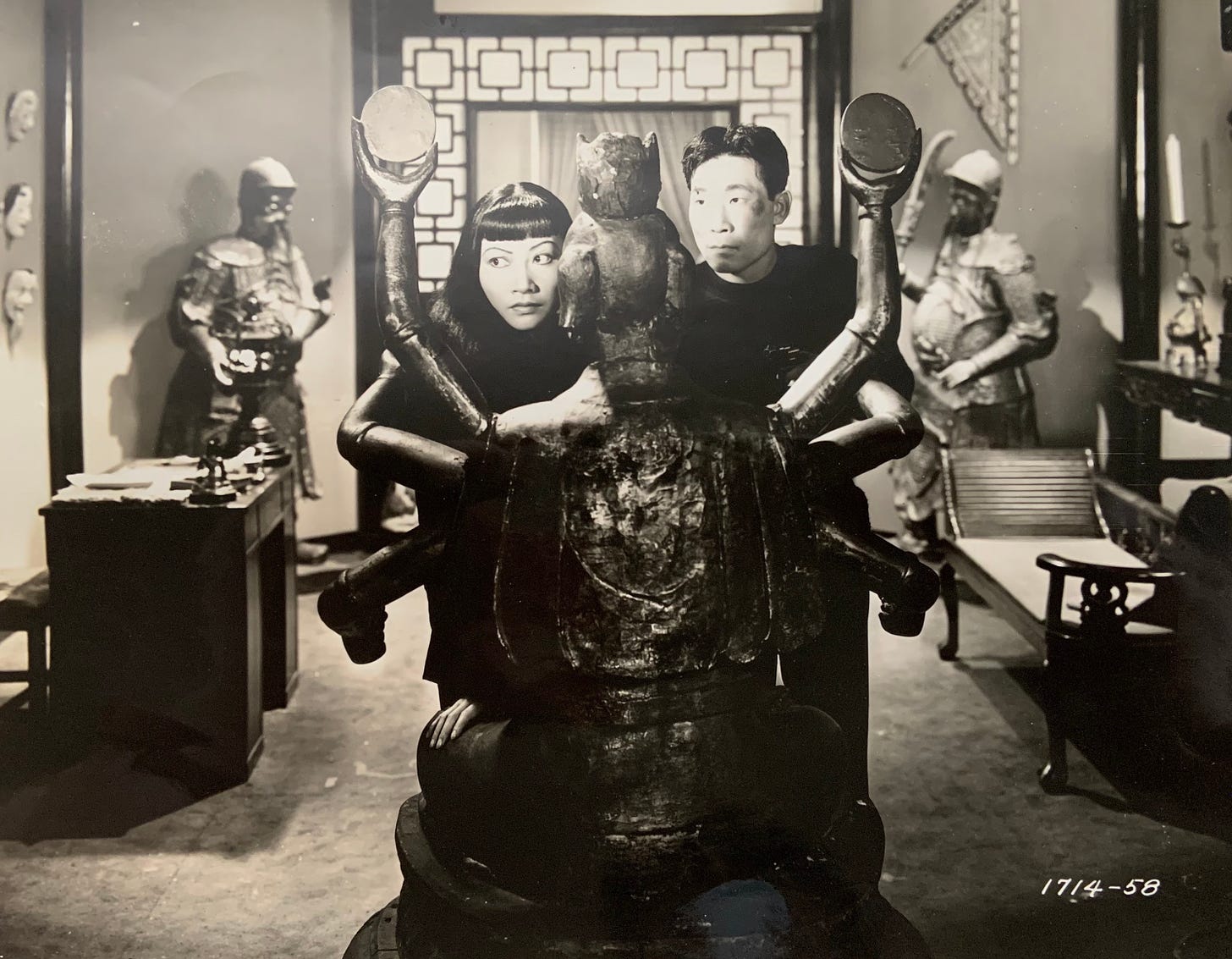
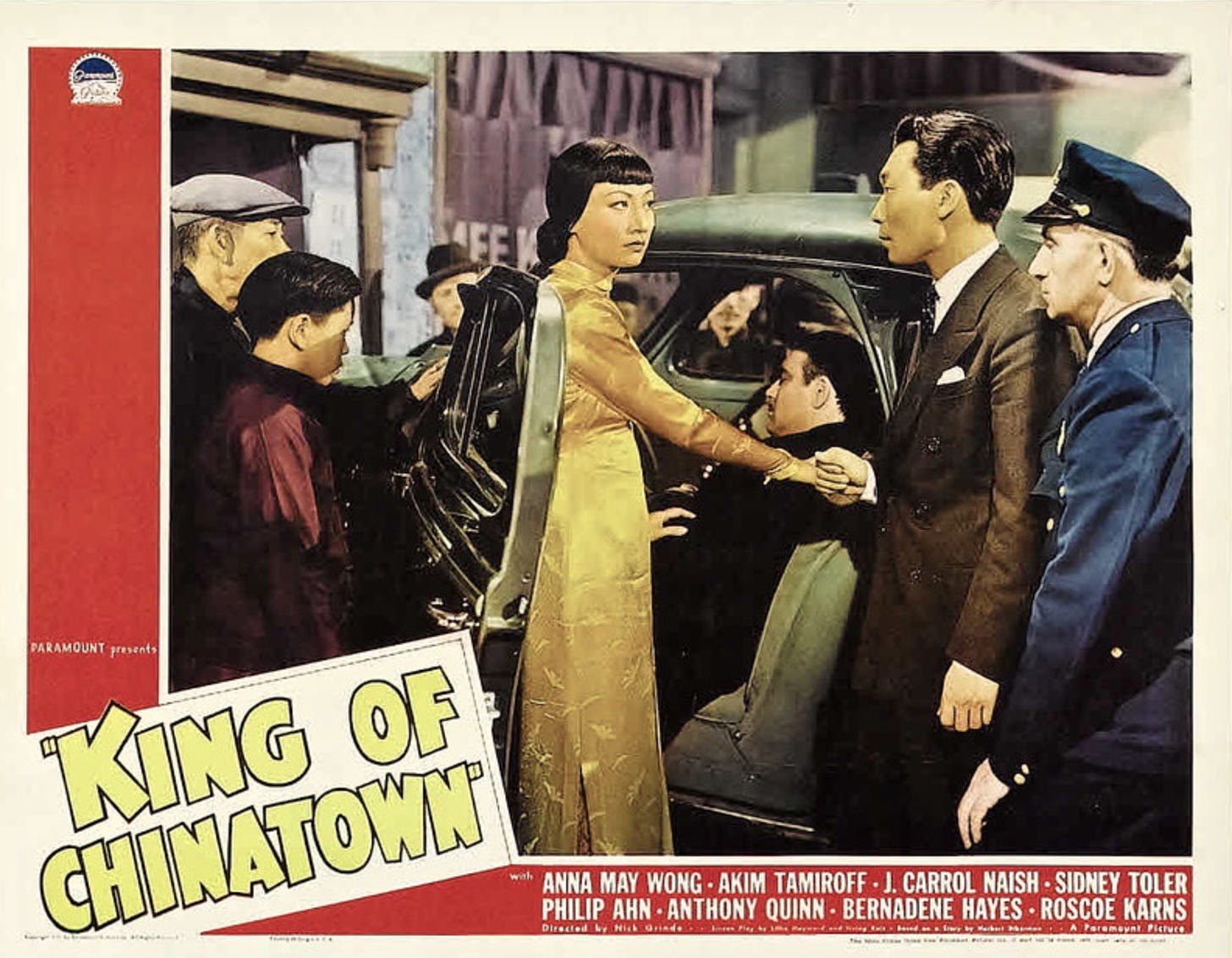
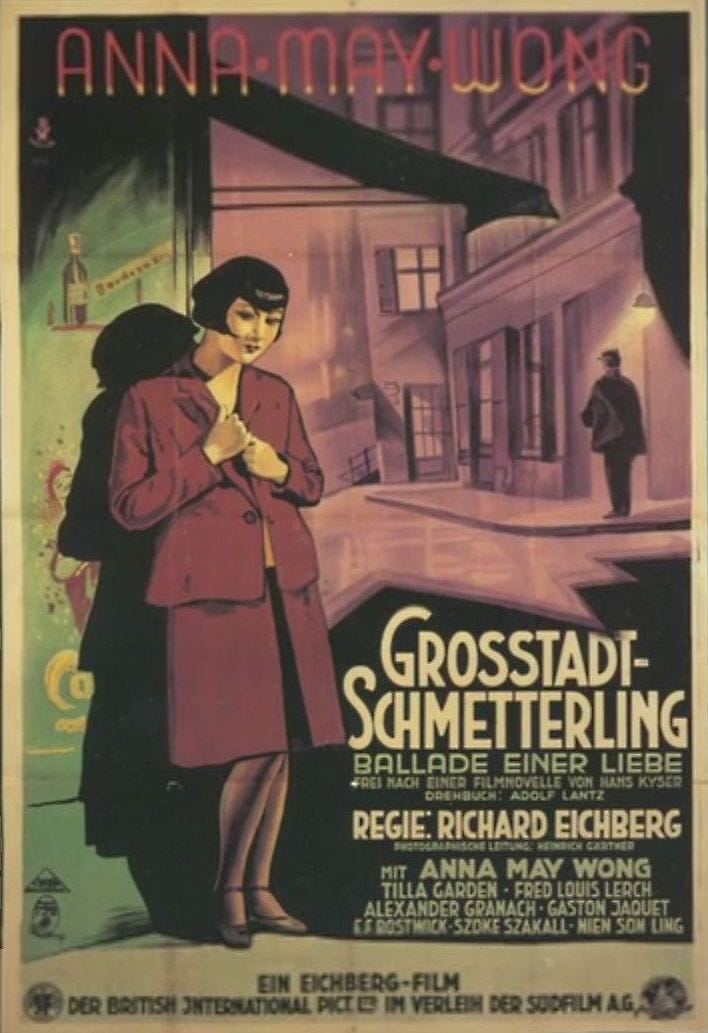
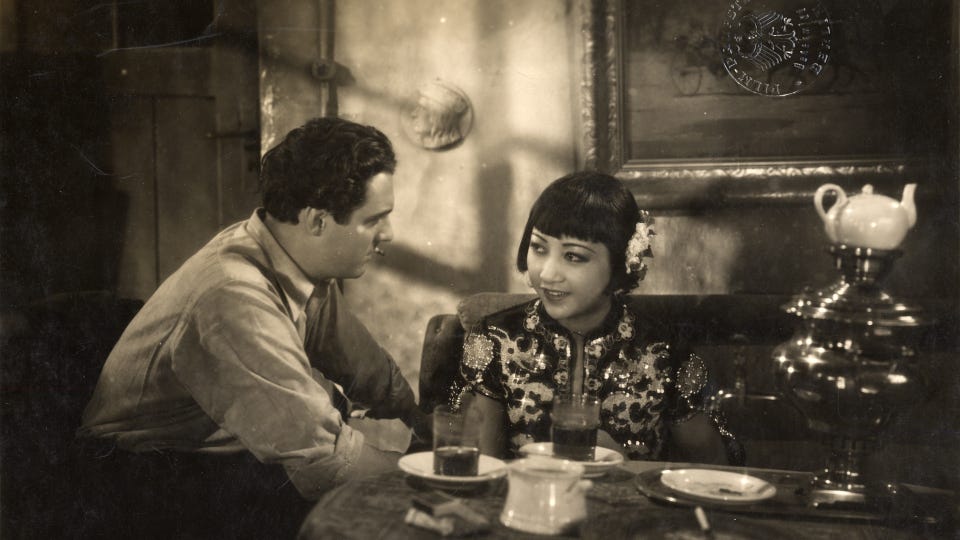
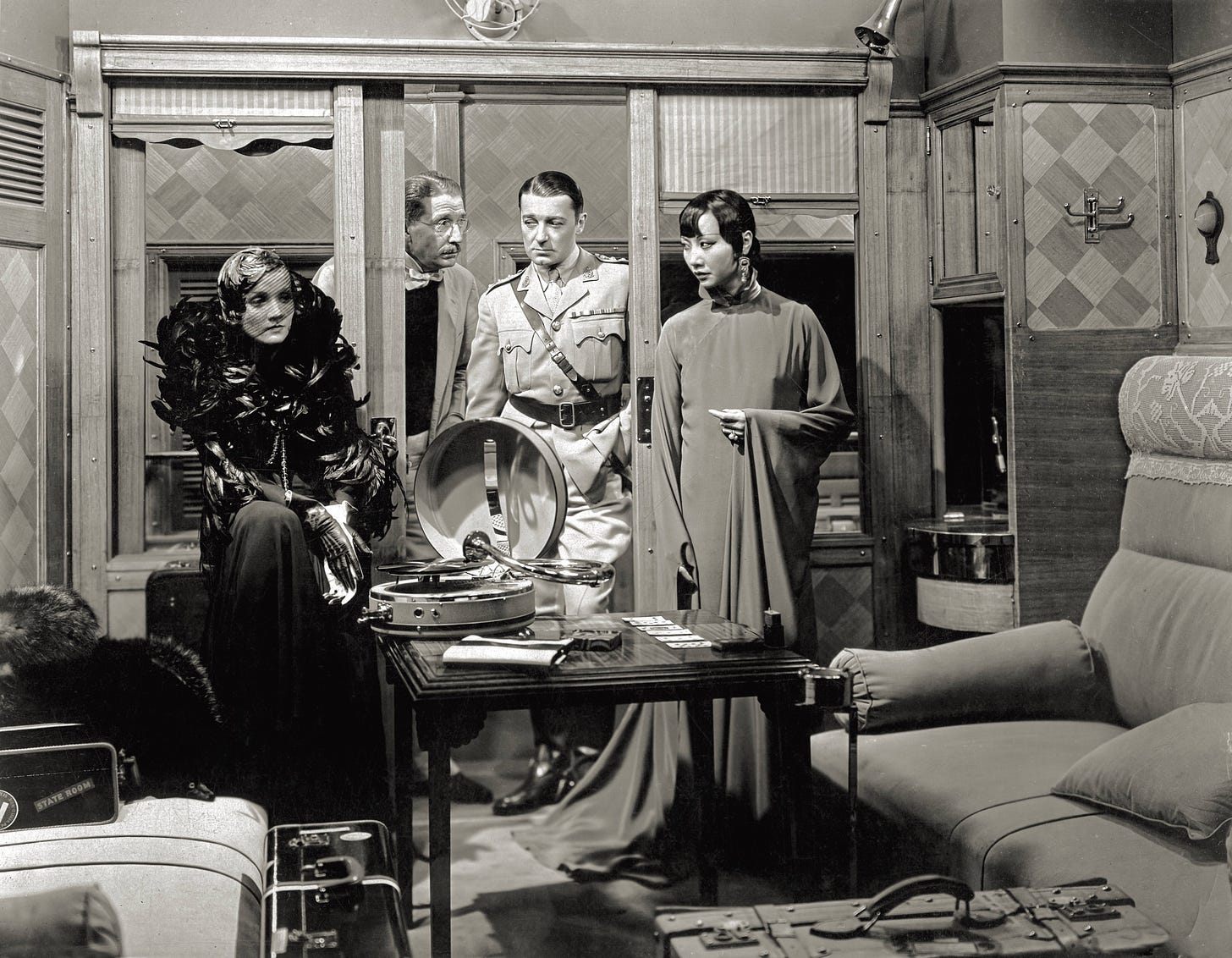
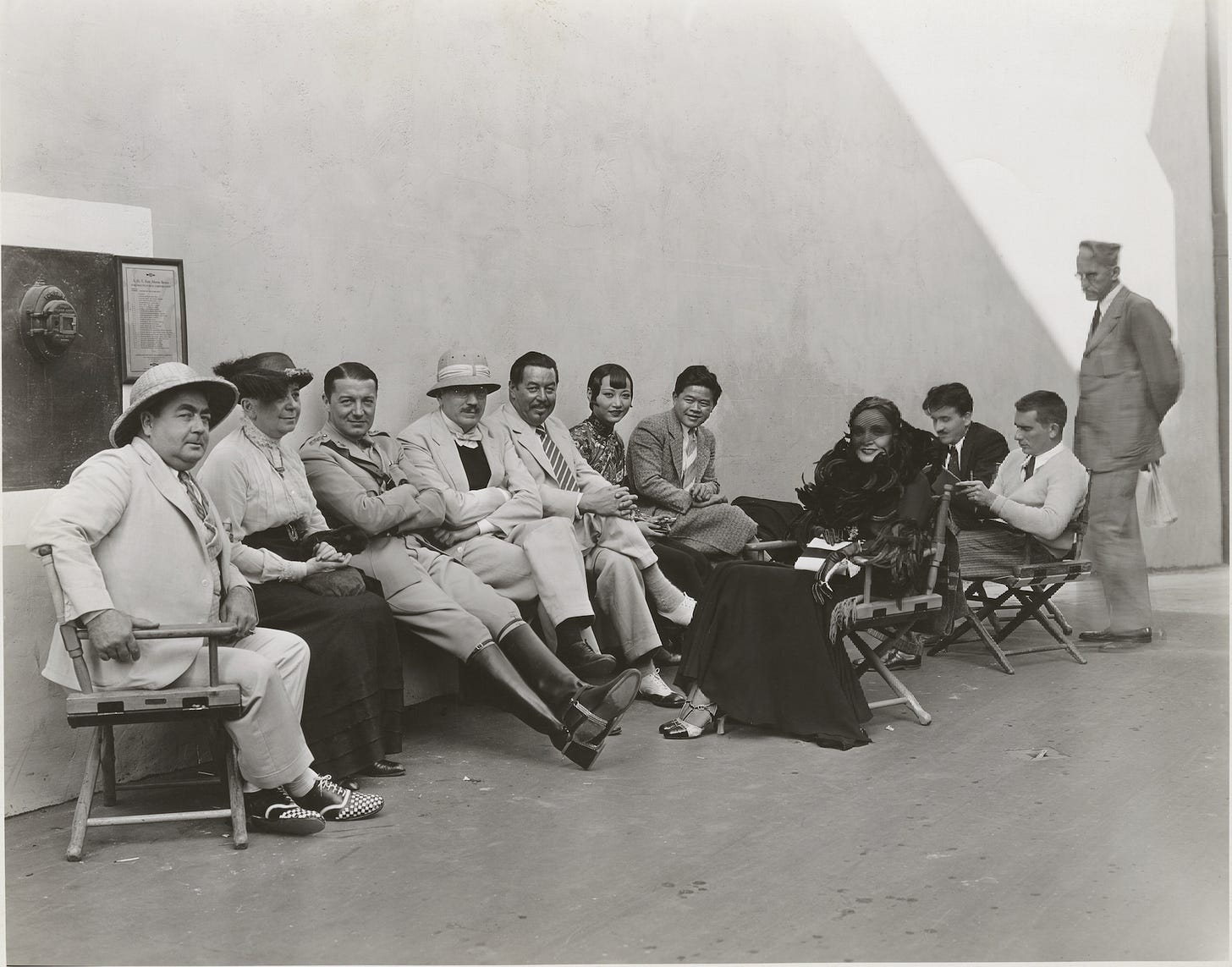
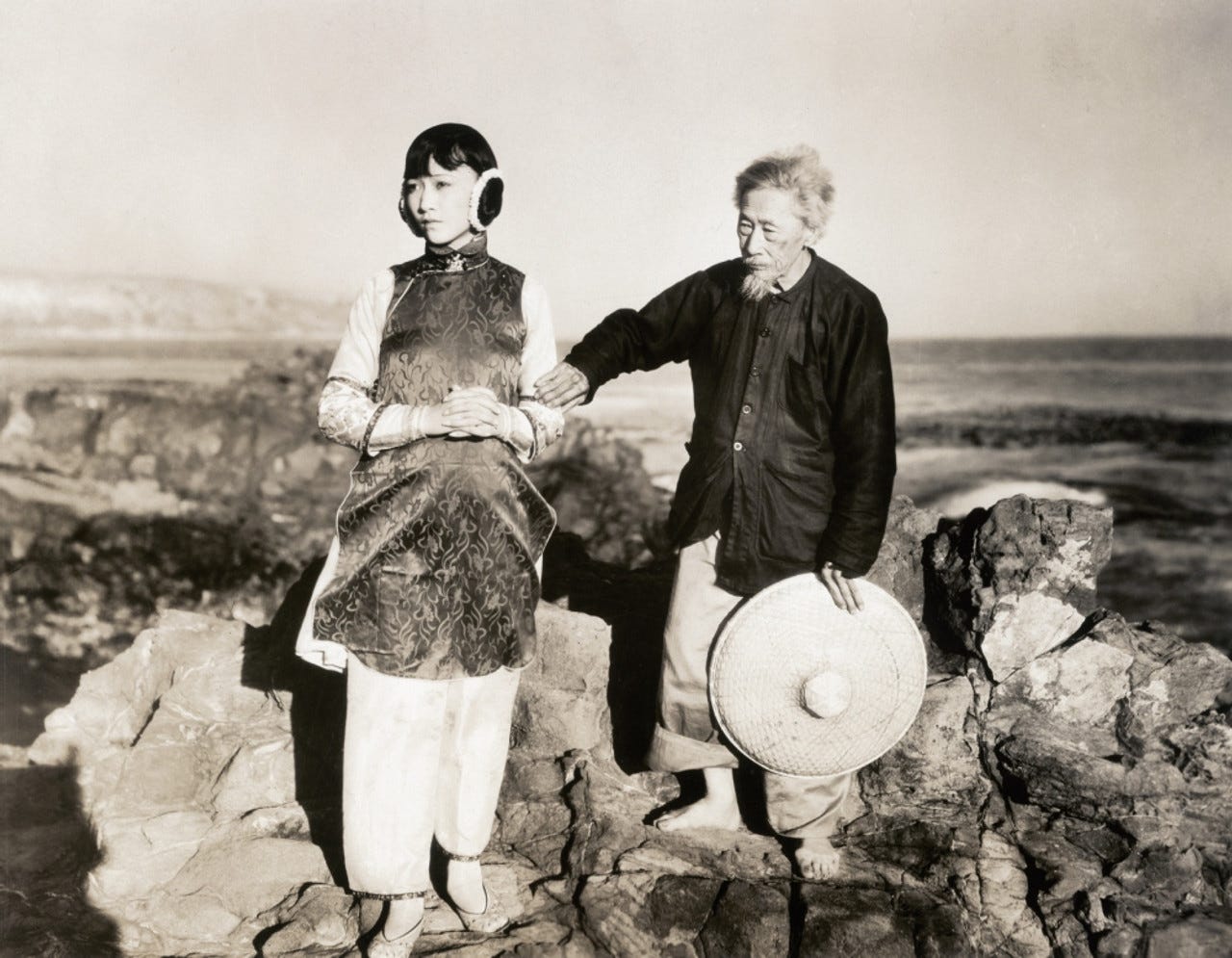
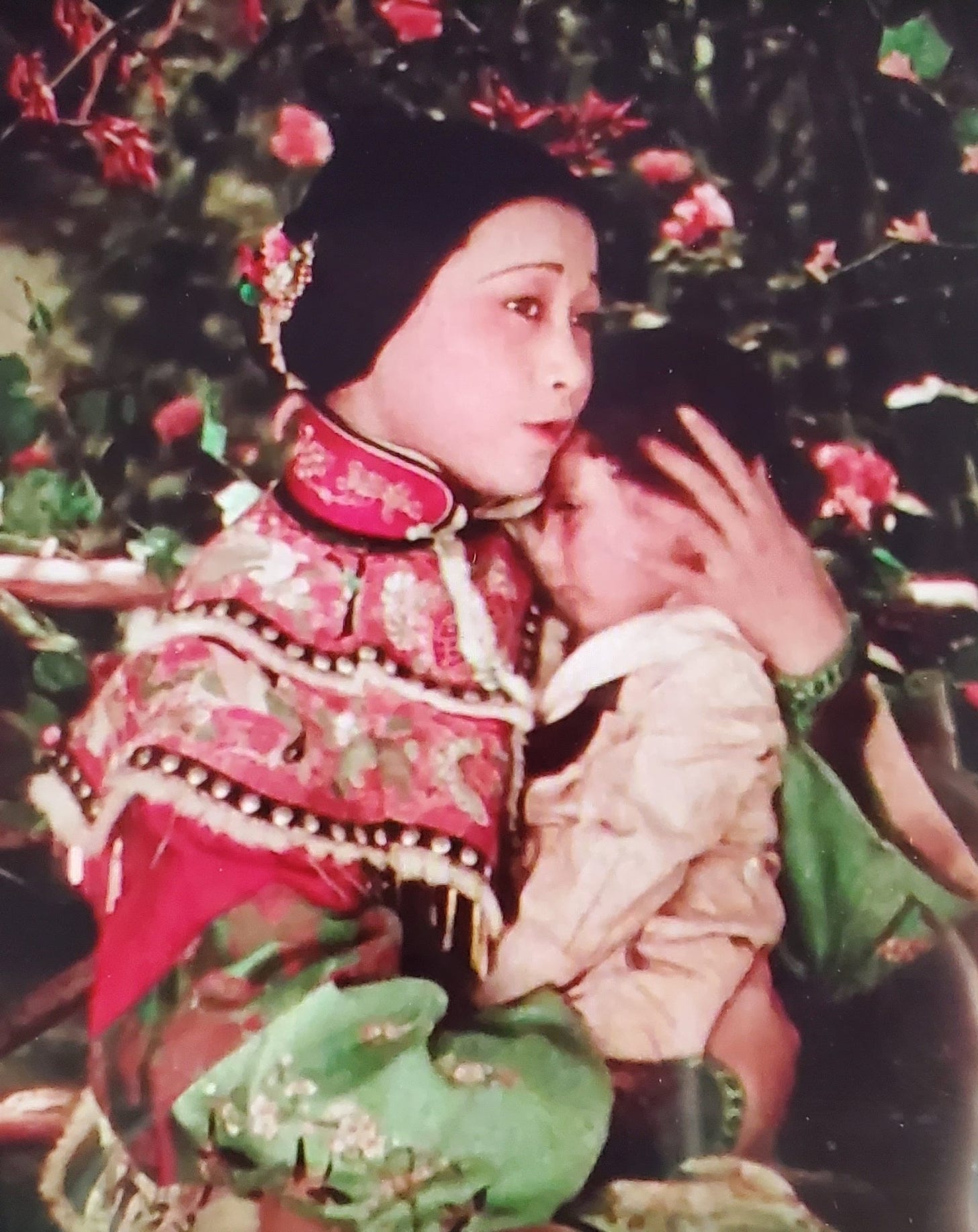
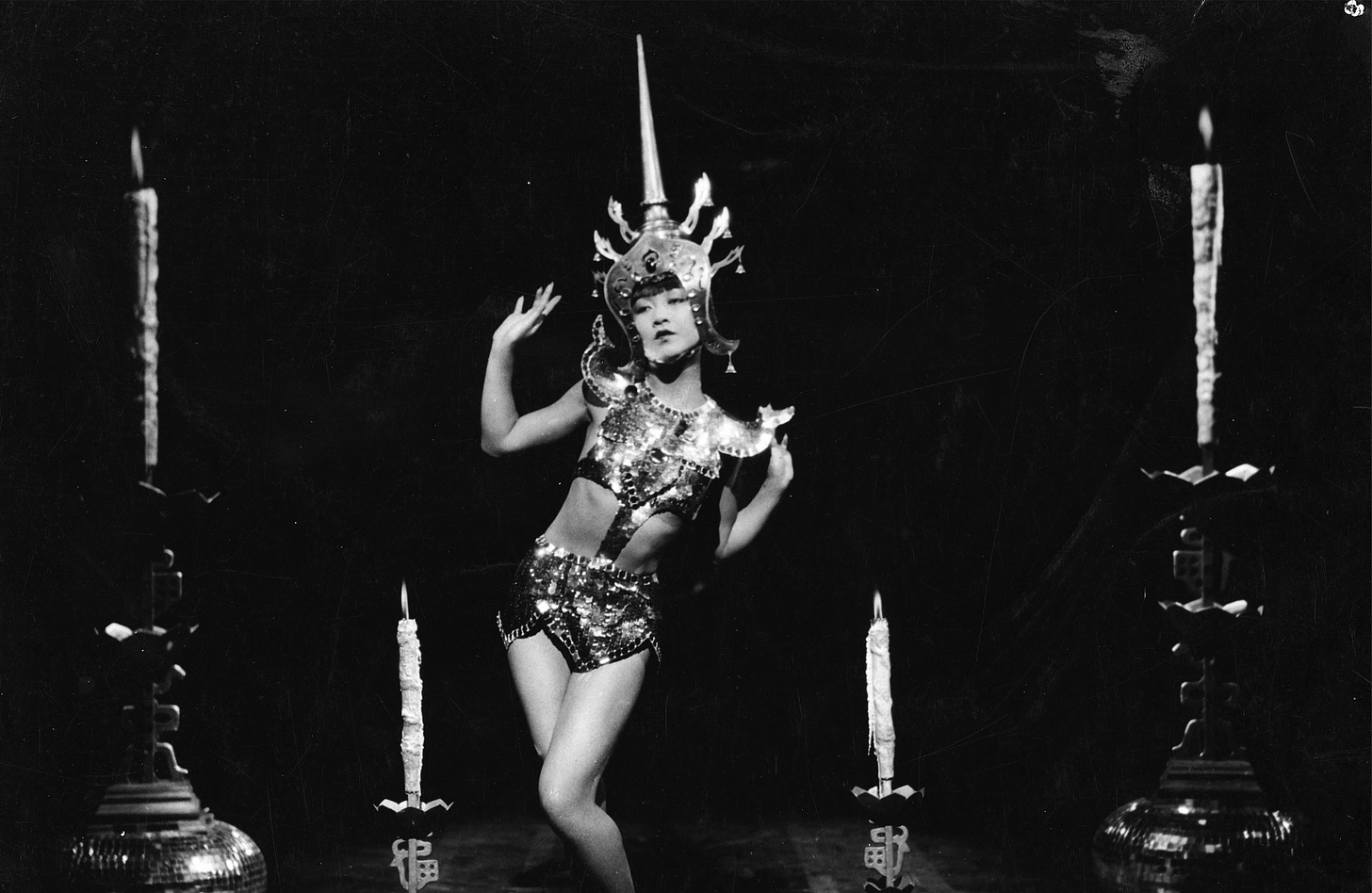
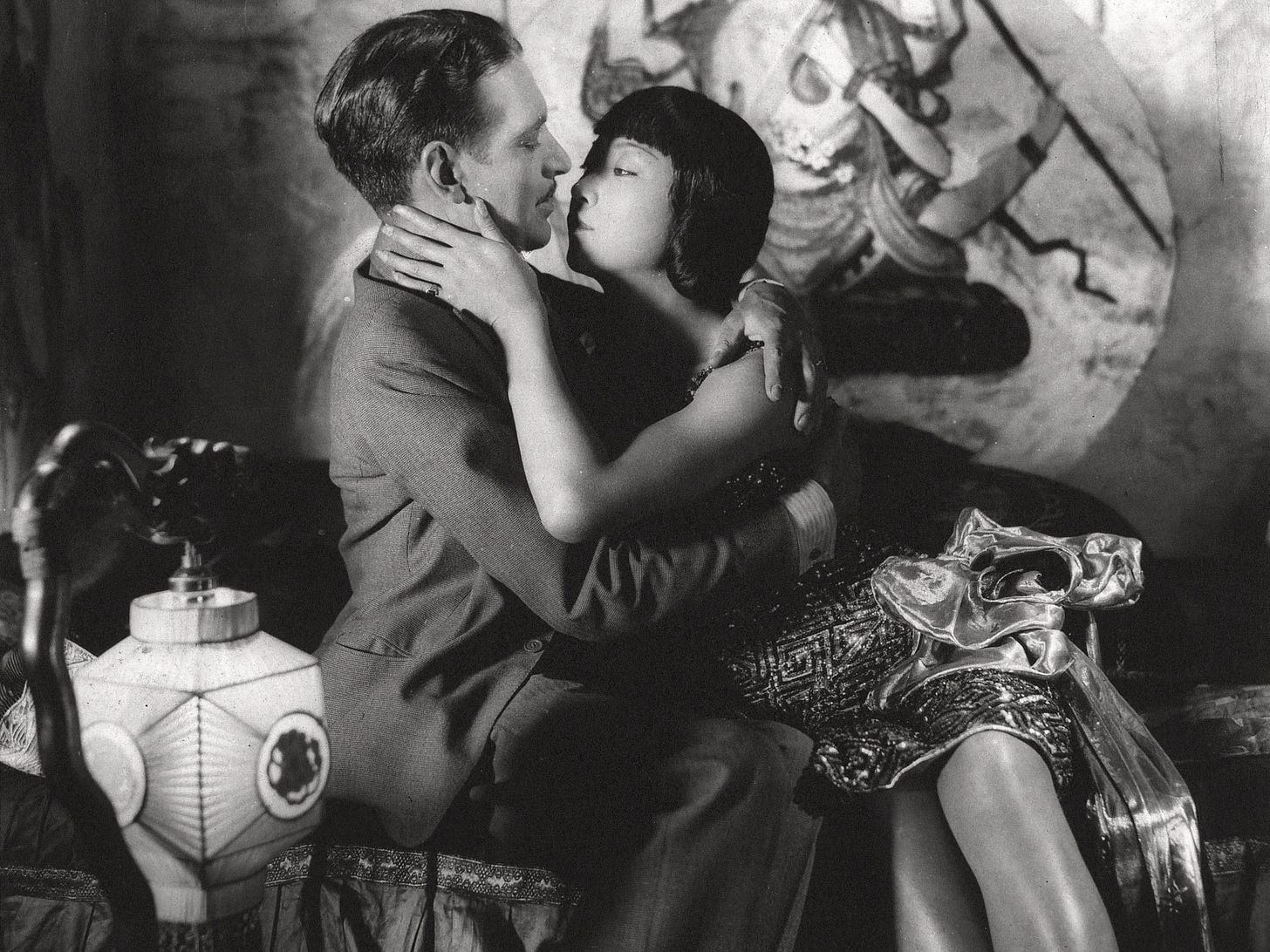
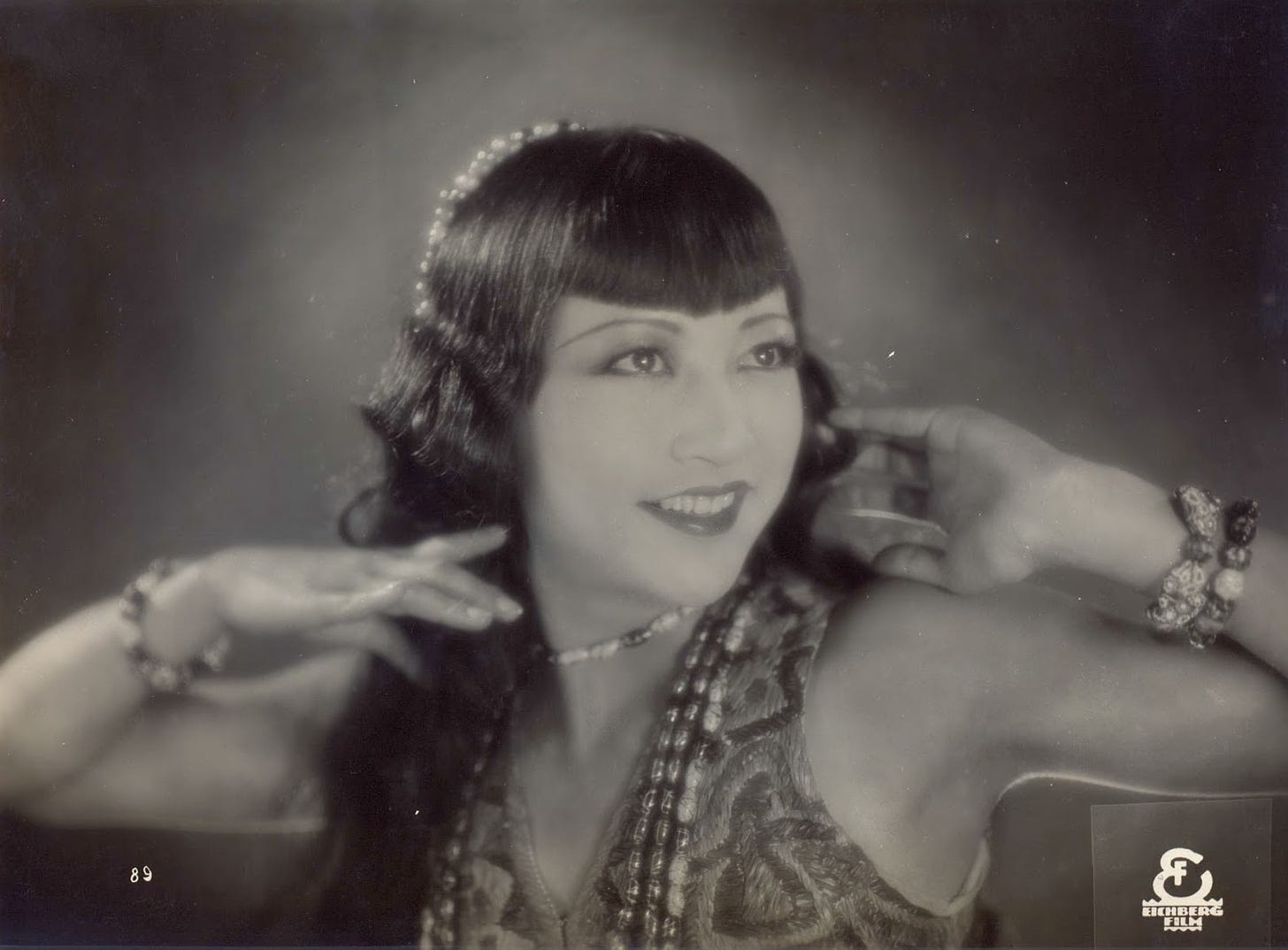
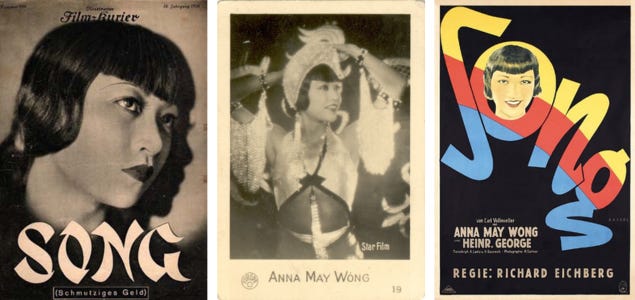
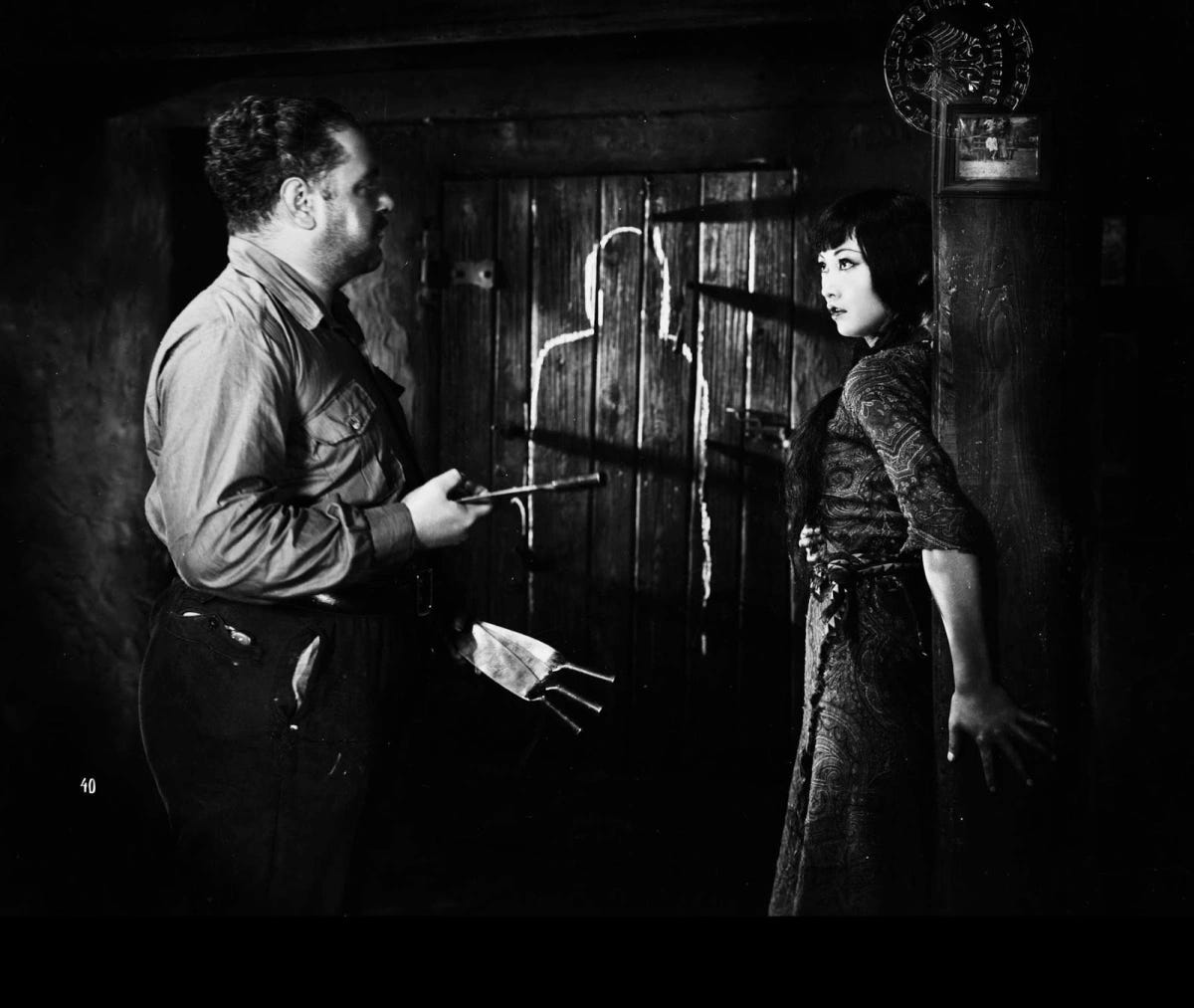
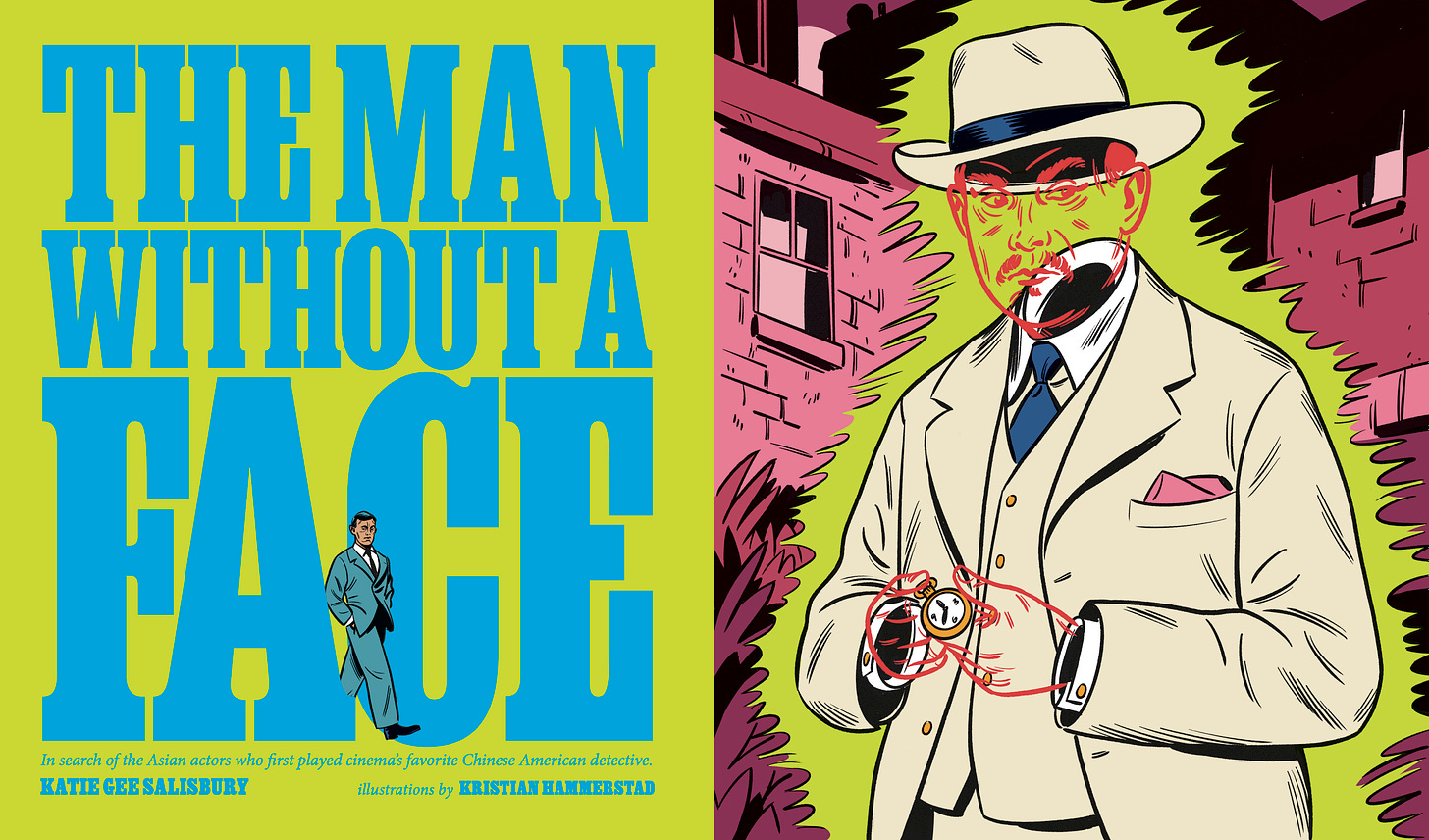
Thank you for the suggestions and links, can't wait to watch these.